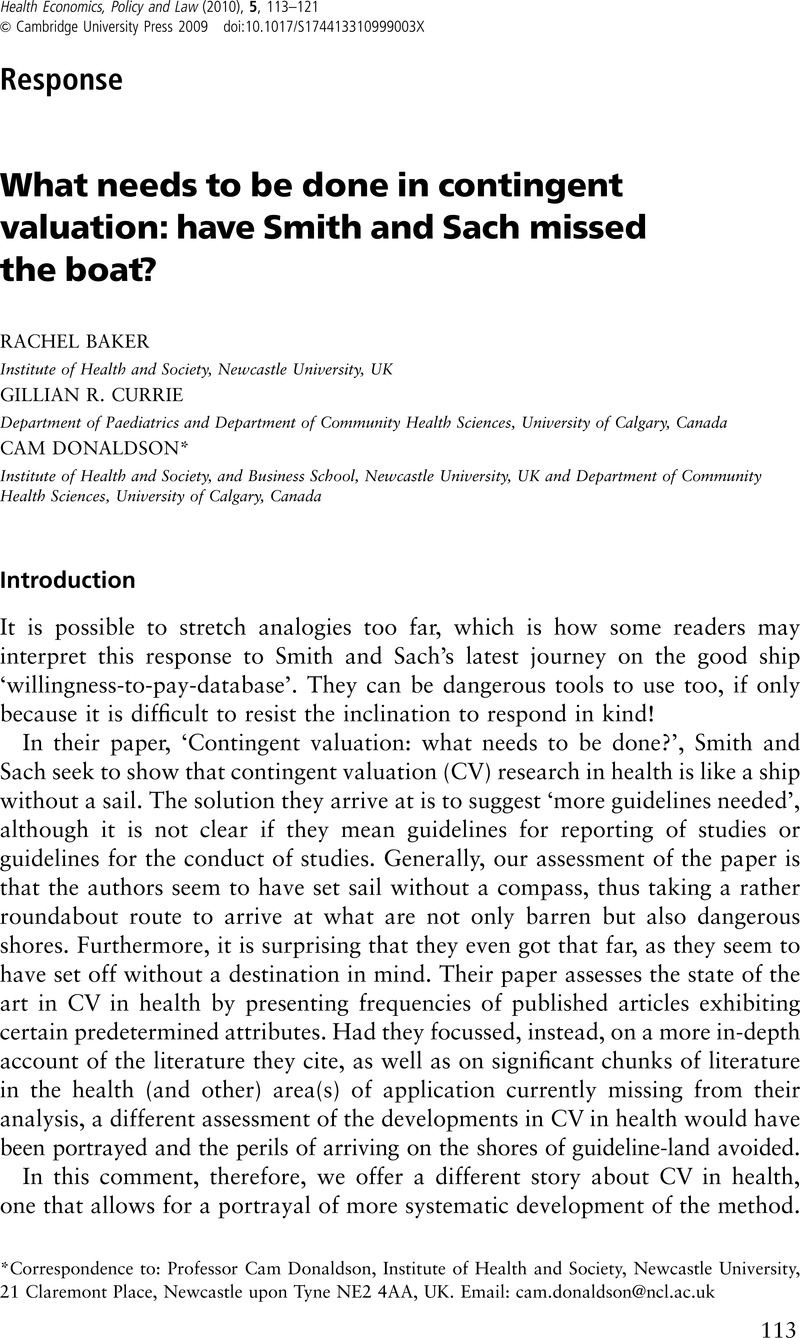Crossref Citations
This article has been cited by the following publications. This list is generated based on data provided by Crossref.
Bobinac, Ana
van Exel, N. Job A.
Rutten, Frans F.H.
and
Brouwer, Werner B.F.
2012.
GET MORE, PAY MORE? An elaborate test of construct validity of willingness to pay per QALY estimates obtained through contingent valuation.
Journal of Health Economics,
Vol. 31,
Issue. 1,
p.
158.
Shackley, Phil
and
Dixon, Simon
2014.
THE RANDOM CARD SORT METHOD AND RESPONDENT CERTAINTY IN CONTINGENT VALUATION: AN EXPLORATORY INVESTIGATION OF RANGE BIAS.
Health Economics,
Vol. 23,
Issue. 10,
p.
1213.
Tessier, Philippe
Sultan-Taïeb, Hélène
and
Barnay, Thomas
2014.
Worker replacement and cost-benefit analysis of life-saving health care programs, a precautionary note.
Health Economics, Policy and Law,
Vol. 9,
Issue. 2,
p.
215.
Buchanan, James
and
Wordsworth, Sarah
2015.
Welfarism Versus Extra-Welfarism: Can the Choice of Economic Evaluation Approach Impact on the Adoption Decisions Recommended by Economic Evaluation Studies?.
PharmacoEconomics,
Vol. 33,
Issue. 6,
p.
571.
Margier, Jennifer
Gafni, Amiram
and
Moumjid, Nora
2023.
Informing decision makers about public preferences for different modalities of cancer treatment in the Rhône–Alps region in France.
International Journal of Technology Assessment in Health Care,
Vol. 39,
Issue. 1,





